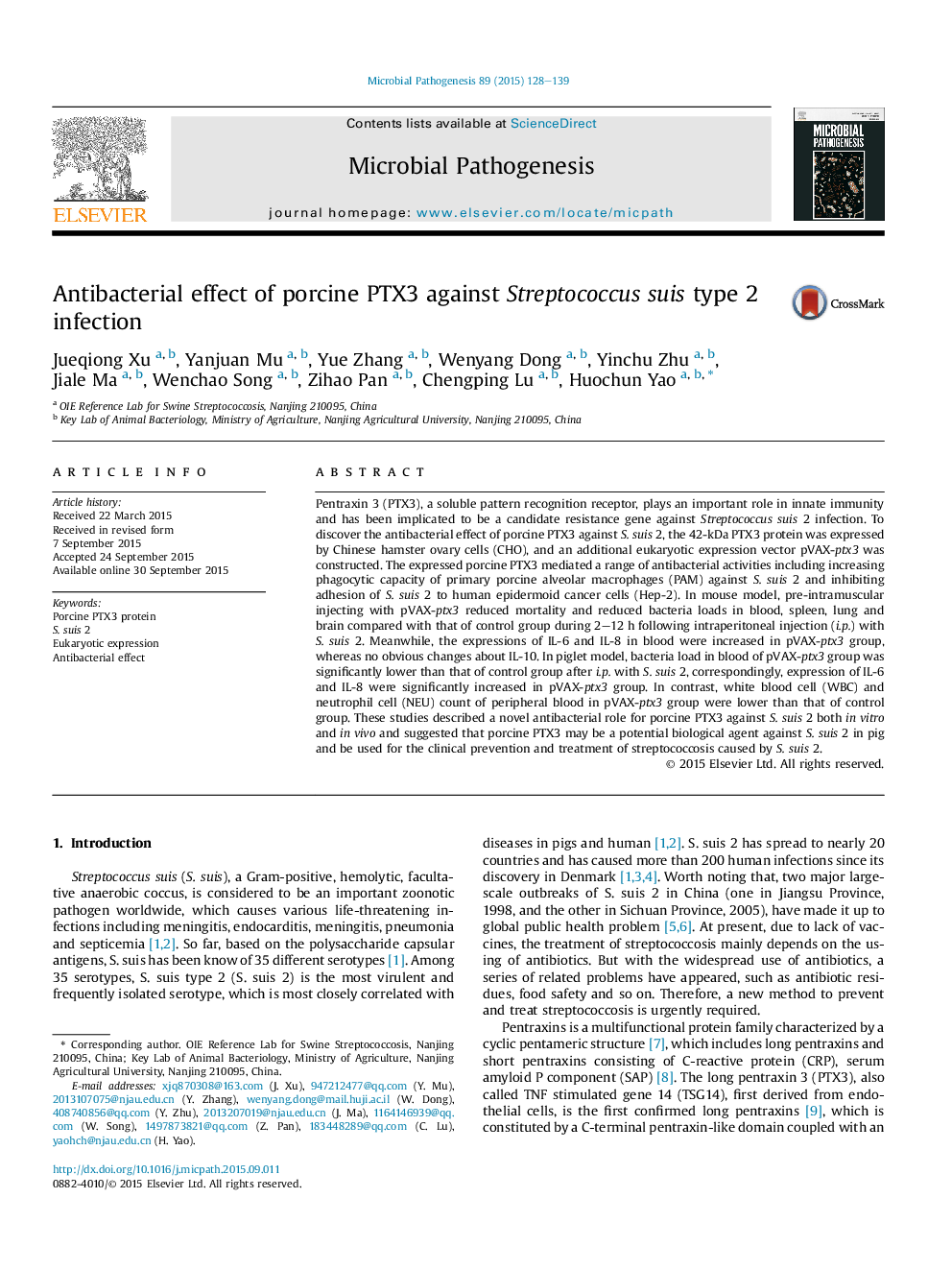| Article ID | Journal | Published Year | Pages | File Type |
|---|---|---|---|---|
| 3416452 | Microbial Pathogenesis | 2015 | 12 Pages |
•This study discovered the antibacterial effect of porcine PTX3 against Streptococcus suis 2.•The porcine PTX3 increased phagocytic capacity of PAM cell against S. suis 2 and inhibited adhesion of S. suis 2 to Hep-2 cells.•Pre-intramuscular injecting with pVAX-ptx3 reduced mortality of mice and reduced bacteria loads in tissues of mice and piglets.
Pentraxin 3 (PTX3), a soluble pattern recognition receptor, plays an important role in innate immunity and has been implicated to be a candidate resistance gene against Streptococcus suis 2 infection. To discover the antibacterial effect of porcine PTX3 against S. suis 2, the 42-kDa PTX3 protein was expressed by Chinese hamster ovary cells (CHO), and an additional eukaryotic expression vector pVAX-ptx3 was constructed. The expressed porcine PTX3 mediated a range of antibacterial activities including increasing phagocytic capacity of primary porcine alveolar macrophages (PAM) against S. suis 2 and inhibiting adhesion of S. suis 2 to human epidermoid cancer cells (Hep-2). In mouse model, pre-intramuscular injecting with pVAX-ptx3 reduced mortality and reduced bacteria loads in blood, spleen, lung and brain compared with that of control group during 2–12 h following intraperitoneal injection (i.p.) with S. suis 2. Meanwhile, the expressions of IL-6 and IL-8 in blood were increased in pVAX-ptx3 group, whereas no obvious changes about IL-10. In piglet model, bacteria load in blood of pVAX-ptx3 group was significantly lower than that of control group after i.p. with S. suis 2, correspondingly, expression of IL-6 and IL-8 were significantly increased in pVAX-ptx3 group. In contrast, white blood cell (WBC) and neutrophil cell (NEU) count of peripheral blood in pVAX-ptx3 group were lower than that of control group. These studies described a novel antibacterial role for porcine PTX3 against S. suis 2 both in vitro and in vivo and suggested that porcine PTX3 may be a potential biological agent against S. suis 2 in pig and be used for the clinical prevention and treatment of streptococcosis caused by S. suis 2.
